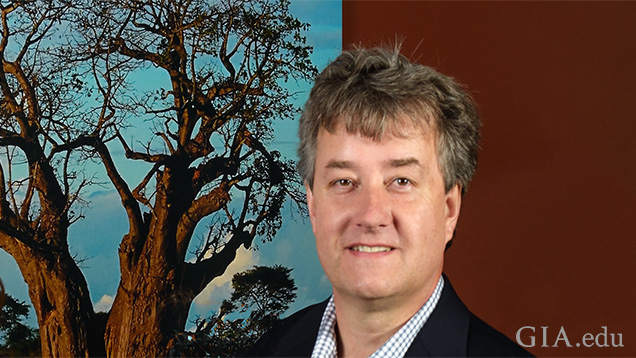Trapiche and More...

Colombia’s unique trapiche emeralds exert a fascination for many gemologists. In fine specimens, the combination of rich, gemmy green color with the six spokes’ geometry is visually arresting.
In our lead article, we’re delighted to present a comprehensive paper on these intriguing gems by a team of researchers headed by Isabella Pignatelli and Gaston Giuliani. They review the geology of trapiche emerald, provide 3-D petrographic examination of their crystals along with spectroscopic and chemical analyses, and propose a new formation model informed by their recent work. We hope this paper will serve as the primary reference on these one-of-a-kind gems for many years to come. Take a look at our cover photo and decide whether trapiche is a gemological curiosity or an object of beauty in its own right.
In our next paper, GIA’s Ulrika D’Haenens-Johansson and her coauthors investigate the gemological properties of colorless to near-colorless HPHT-grown synthetic diamonds produced specifically for gem use by a Russian firm, New Diamond Technology. Their analysis of 44 faceted samples ranging up to 5.11 ct provides convincing evidence of the quality improvements—and increased size—of synthetics grown by this method.
A gemological curiosity or an object of beauty in its own right?
Meanwhile, Lesotho’s Letšeng-la-Terae mine is currently enjoying a renaissance. Rising prices for large, high-quality diamonds have overcome the twin challenges of this unique mine’s remote location and low ore grade. In our third article, GIA’s Russell Shor and Robert Weldon and their co-authors profile Letšeng to explain how the current owners have adapted their operations to promote recovery of the mine’s biggest gems and increase profitability. Coauthors Bram Janse, Christopher “Mike” Breeding, and Steven Shirey offer insight into this mine’s geology, its location on the Kaapvaal craton, and the distinctive characteristics of its diamonds.
Next, Zemin Luo, Mingxing Yang, and Andy Shen from the China University of Geosciences in Wuhan apply a statistical analysis method based on linear discriminant analysis (LDA) and LA-ICP-MS trace-element data to the provenance of dolomite-related white nephrite. The authors demonstrate the technique’s high accuracy and potential for origin determination with many other gems.
We hope you enjoy our second Micro-World column. We had a fantastic response to the first installment and are extremely pleased to welcome several new contributors. We also want to thank our Lab Notes and Gem News International (GNI) contributors—these sections always refresh me with their diversity.
Finally, I’d like to welcome two new editors to our GNI section: Gagan Choudhary of the Gem Testing Laboratory in Jaipur, India, and GIA’s own Dr. Mike Breeding—we thank them for their commitment and participation.
Welcome to our Fall issue!



